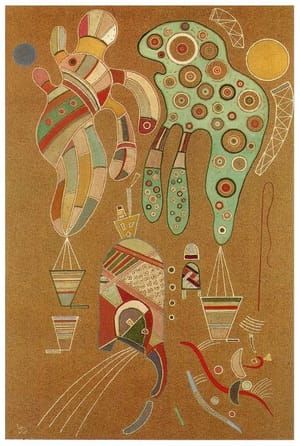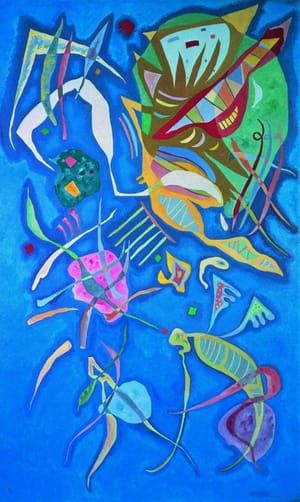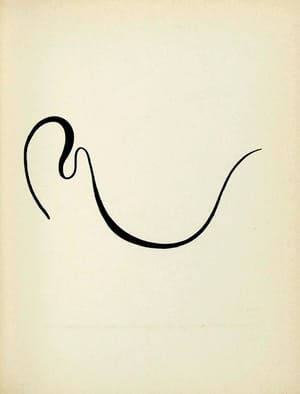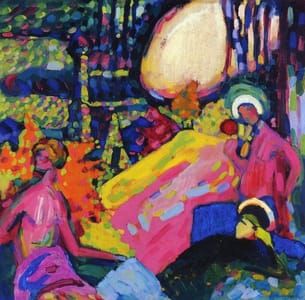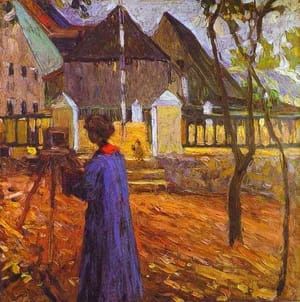
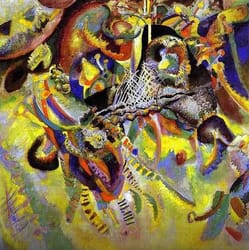
Fuga (Fugue), 1914
Wassily Kandinsky
Listed as one of the most expensive pieces of Russian art - $22.9 million. This painting set a price record back in 1990 when nobody dared to buy it. The good part about that is that now anyone can admire it at the private Foundation Beyeler in Switzerland.
(https://www.rbth.com/multimedia/pictures/2014/10/27/10_most_expensive_paitings_by_russian_artists_40929)
In contrast to Improvisation 10, Fuga (Fugue) is no longer developed from black lines and sharply enclosed areas of color. Kandinsky dissolves structures that are bound solidly together. Shapes and patterns of colour hover over a brightly shining chasm; these elements move in all directions and are woven into a sonic image of extreme dynamism.
(http://www.myswitzerland.com/nl-nl/fuga-fugue.html)
In his writing, Kandinsky identified the subject of Composition VI 1913 as the Deluge, or great Biblical flood, a cataclysmic event that ushers in an era of spiritual rebirth. He believed that painting itself resembled such a cataclysm: ‘Painting is like a thundering collision of different worlds that are destined in and through conflict to create that new world called the work.’ Though one can make out the forms of boats, crashing waves and slanting rain, it is the mood of violence and chaos that is more important than the literal interpretation of objects or narrative. The painting is characterised by a powerful sense of movement, created by contrasting light and dark areas of colour, linked by strong diagonals. Conventional perspective has disappeared. Instead, forms and colours are layered and juxtaposed, interacting to create a swirling, three-dimensional effect. The monumental scale of the work adds to this, giving the viewer the sense of being immersed in the space of the painting. These effects contribute to what Kandinsky described as the ‘inner sound’ of the picture.
Always fascinated by the emotional power of music, Kandinsky regarded this ‘inner sound’ as crucial to his painting. The connection is made explicit in the title of Fugue 1914, which suggests a visual equivalent to a musical fugue, with its overlapping, repeated motifs and themes at different pitches.
(http://www.tate.org.uk/whats-on/tate-modern/exhibition/kandinsky-path-abstraction/kandinsky-path-abstraction-room-guide-6)
Uploaded on Jul 3, 2017 by Suzan Hamer
Wassily Kandinsky
artistArthur
Wait what?


